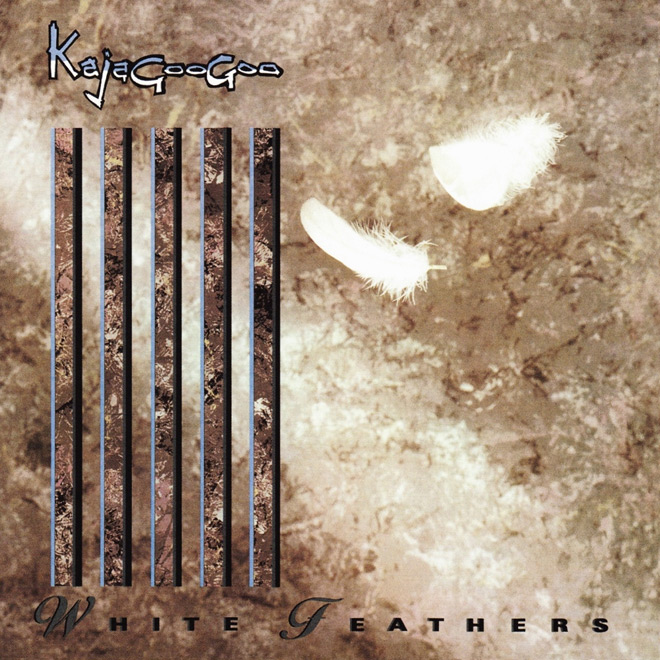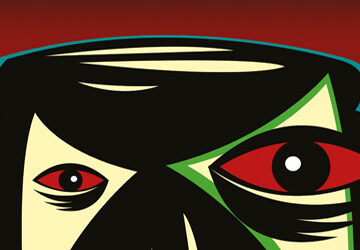Every time there is a retrospective feature on ’80s music or ’80s New Wave in print or on T.V., Kajagoogoo is almost always on top of the list—along with A Flock of Seagulls (“Space Age Love Song”), a-ha (“The Sun Always Shines on T.V.”), and Duran Duran (“New Moon on Monday”).
Thanks, but no thanks, really! Because, more often than not, the articles or the shows present these bands in a laughable manner or, worse, mock and scrutinize them under the proverbial microscope. Instead of celebrating these artists’ body of musical works, they tend to pick on their hairstyles, fancy garbs, and social blunders. These were, of course, inevitable parts of the whole music scene… icings on the cake, so to speak; after all, fashion and music go together well. However, an academic and respectful assessment of musical works goes beyond such juvenile jabs. It should rather focus on what truly matters most… the music.
Kajagoogoo received a lot of flak from scoop-hungry journalists usually because of the flamboyant fashion sense of Limahl and the rest of the band. Obviously, those critics did not really understand the songwriting and music-making process, which involve song structures, lyrics, instrumentation, arrangement, and all the other elements of music production. Because if they did, then they would have not been derogating Kajagoogoo as “all-looks, no talent.” Instead, they would have heard the complex beauty of its songs.
Formed in 1978, in Bedfordshire, England, by Steve Askew (guitars, programming, backing vocals), Nick Beggs (bass, Chapman Stick, guitars, keyboards, programming, percussion, lead and backing vocals), Stuart Neale (keyboards, programming, piano, backing vocals), and Jez Strode (drums, percussion) and then joined by Limahl (lead vocals) in 1981, Kajagoogoo catapulted to massive popularity in 1983 with the strength of its breakthrough single “Too Shy.” This song, which placed number-one on the U.K. Singles Chart, unfortunately overshadowed the rest of the band’s outputs – a total of four studio albums, 1983’s White Feathers, 1984’s Islands, 1985’s Crazy Peoples Right to Speak (as Kaja), and 2008’s Gone to the Moon. Since that, White Feathers is celebrating its 35th anniversary, give it a spin and let the songs fly you on their wings down memory lane.
Released on April 18, 1983, on EMI Records, White Feathers opened with the bouncy-rhythmed, dancefloor-magnet title track, echoing the same glittery, mirror-ball vibes of Blue Zoo’s “Somewhere in the World There’s a Cowboy Smiling” and Bronski Beat’s “Hit That Perfect Beat.” Then, immediately following, was the massive and soaring “Too Shy,” which to this day can still send shiver down the spine and twinkle on the toes of any New Wave music enthusiast. Still pulsating the same heartbeat, “Lies and Promises” was Synthpop at its best – upbeat, vibrant, and oozing with youthful vigor; aligning itself with the early works of Depeche Mode (“New Life”) and Kraftwerk (“The Model”) at its poppiest and most accessible. The party continued with the infectious and sophisticated “Magician Man.” The instrumental “Kajagoogoo” ended Side A of the album, showcasing the band’s experimental flair, especially of the bass player extraordinaire Beggs, who has become also a respected musician in the Progressive Rock world.
Side B started with another fan favorite and regular radio staple, “Ooh to Be Ah” – a track as funky and as engaging as the album opener. Then there was the Euro Pop/Gothic Rock combo “Ergonomics,” which featured again a searing and melodic interlude of guitar and keyboard interplay. “Hang On Now” slowed down the pace and relaxed the mood – a shiny and soulful Sophistipop stomper; Spandau Ballet must have been proud of this one, in spite of Duran Duran’s Nick Rhodes’ being one of the album’s producers. After all, the much-publicized rivalry between the two iconic bands was just another controversy-courting concoction of musically challenged members of the press. Apparently, the Spandau Ballet and Duran Duran lads were really drinking buddies in their heyday.
The Duran Duran-inspired “This Car Is Fast” then returned the listener to the bright center of the stage. Finally, Kajagoogoo wrapped up White Feathers with the choppy and spacey “Frayo,” completing its circle of influences by exuding an aura of Japan (“Quiet Life”).
In 2009, all five members of Kajagoogoo have once again re-formed; but to date, aside from a couple of singles, they are yet to come up with something more substantial. So now, while you await the death-defying news of a proper full-length album, revisit the 35-year-old White Feathers – Kajagoogoo’s beloved firstborn… surely a sparkly sequined feather on its members’ collective coiffures.






No comment